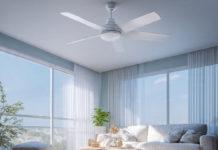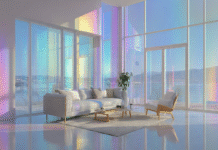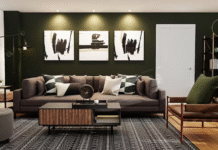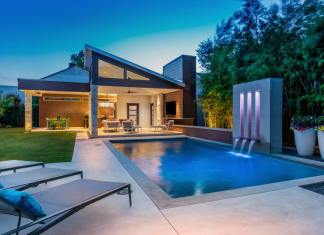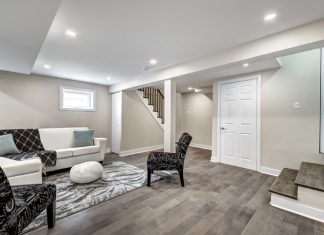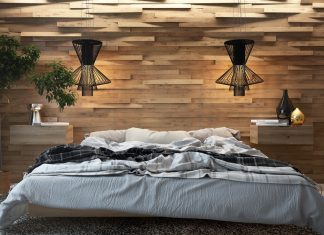Appropriate lighting fixtures make your home functional and aesthetically appealing. But when it comes to keeping things minimal, modern interior designers opt for linear ceiling lights.
A linear ceiling light is a rising trend in the market. This sleek, elongated lighting fixture is commonly found in residential and commercial spaces. From kitchens to your hallways and living areas, linear ceiling lights give your home a contemporary, minimalist touch.
However, like any lighting option, linear ceiling lights have advantages and disadvantages. Let’s explore the pros and cons of incorporating them into your home decor.
What is A Linear Ceiling Light?
Linear ceiling lights are long, narrow fixtures designed to spread light evenly across a space. They feature clean lines and a sleek look, making them ideal for modern interiors. Some common forms include light channels, tubes, or strip lights.
Linear ceiling lights are perfect for lighting up large areas. They spread light evenly across the room and can be linked together to create a seamless flow of light without any gaps.
Types of Linear Ceiling Lights
The three common types of linear ceiling lights are:
- Suspended linear lights can be hung from the ceiling using wires or rods. They are perfect for dining areas, offices, or kitchen islands where you need direct, stylish lighting.
- Recessed linear lights are incorporated into the ceiling. They give your space a smooth, streamlined look and are great for minimalist spaces or rooms with low ceilings.
- Surface-mounted linear lights are attached directly to the ceiling’s surface. They are easy to install and work well in homes and commercial settings.
Pros of Linear Ceiling Lights
-
Energy Efficiency
Compared to traditional fluorescent bulbs, linear ceiling lights consume less energy. This is because they typically use LED technology. Moreover, LEDS tend to last longer, which eliminates the need for frequent replacements. This makes them a cost-effective and eco-friendly lighting option in the long run.
-
Uniform, Soft Lighting
These fixtures provide even light distribution across a room, minimising shadows and glare. They offer consistent, comfortable lighting, making them a preferred option for task-oriented spaces such as offices, kitchens, and retail environments.
-
Design Flexibility
Linear ceiling lights are available in various lengths, colours, and finishes. They can be suspended, recessed, or surface-mounted, which means they easily adapt to different ceiling heights and room layouts. This versatility allows for creative and tailored lighting designs.
-
Aesthetic Appeal
The modern appearance of linear ceiling light fixtures allows homeowners to enhance the look of their interior spaces. These lights give a polished touch to residential and commercial spaces and can also complement minimalistic and industrial styles, making them perfect for every home.
-
Low Heat Emission
Linear ceiling lights use LEDS, which means they produce very little heat. This not only makes them safer to use but also allows them to create a cooler indoor environment. For this reason, they are also ideal for warmer climates and rooms with low ventilation.
-
Programmable/Adjustable Features
Many modern hanging lighting fixtures are equipped with smart features such as dimming, colour temperature adjustment, or integration with home automation systems. These features allow users to customise the ambience based on mood or activity.
Cons of Linear Ceiling Lights
-
Higher Initial Cost
The upfront cost of purchasing and installing linear ceiling lights is significantly high. While energy savings offset this over time, the initial investment may not fit every budget.
-
Installation Complexity
These lights often require careful planning for placement, alignment, and wiring. Depending on the type (especially recessed or suspended), professional installation may be necessary, which increases the overall cost.
-
Maintenance Challenges
With traditional lights, you can replace a bulb or a few bulbs if they are damaged, but most linear lights may need full section replacements if they are damaged or malfunctioning. This can make maintenance more time-consuming and costly.
-
Limited Applicability
Linear ceiling lights are best suited for modern and minimalist interiors. They may look out of place in more classic or ornate rooms, where traditional chandeliers or decorative fixtures are more fitting.
-
Potential Glare
If linear lights are not installed properly or lack sufficient diffusion, they may cause glare. This will eventually lead to eye strain or discomfort, especially in workspaces with screens or glossy surfaces.
LEDIA Lighting Linear Lights Series: Ultimate Lighting Solution for Every Space
LEDIA lighting is a leading LED light supplier that offers innovative lighting solutions for commercial, industrial, and residential spaces.
LED Strip Lights:
Available in both regular and silicone variants, these flexible strips are suitable for customised lengths and a wide range of uses, including decorative, residential, and commercial lighting. Options include waterproof ratings (IP20–IP68), high colour rendering (CRI 80+ & 90+), and programmable RGB strips for creative and dynamic lighting effects.
Cabinet Lights:
LEDIA offers various cabinet lighting solutions, including consumer, commercial, residential, and built-in cabinet lights. Some models feature motion sensors and smart controls, making them ideal for kitchens, wardrobes, and intelligent home systems.
Linear Light Fixtures:
These include surface-mounted, recessed, and suspended linear fixtures, designed for offices, retail spaces, industrial facilities, and architectural applications.
LEDIA lighting supports customised lighting solutions for unique project requirements. If you are looking for a partner for your lighting projects, contact LEDIA lighting.


